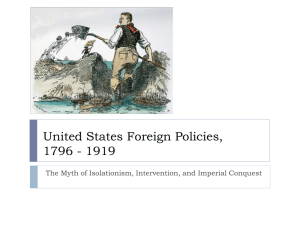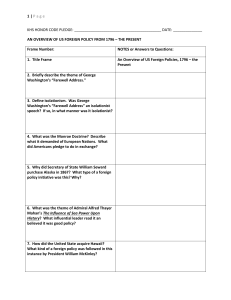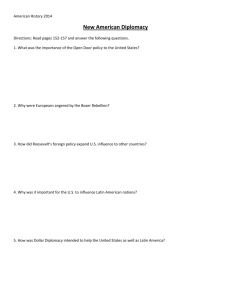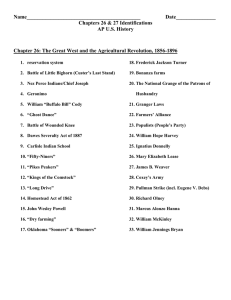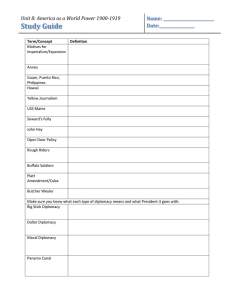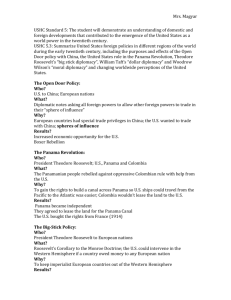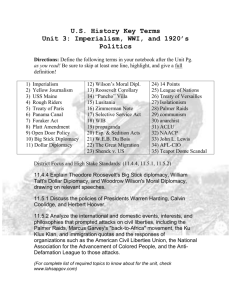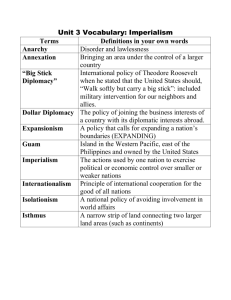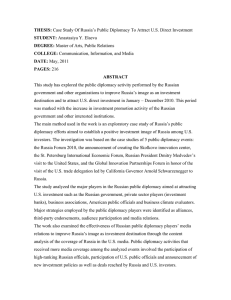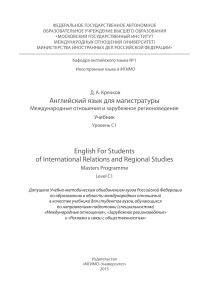Overview of US Foreign Policies, 1796 - The Present - fchs
advertisement
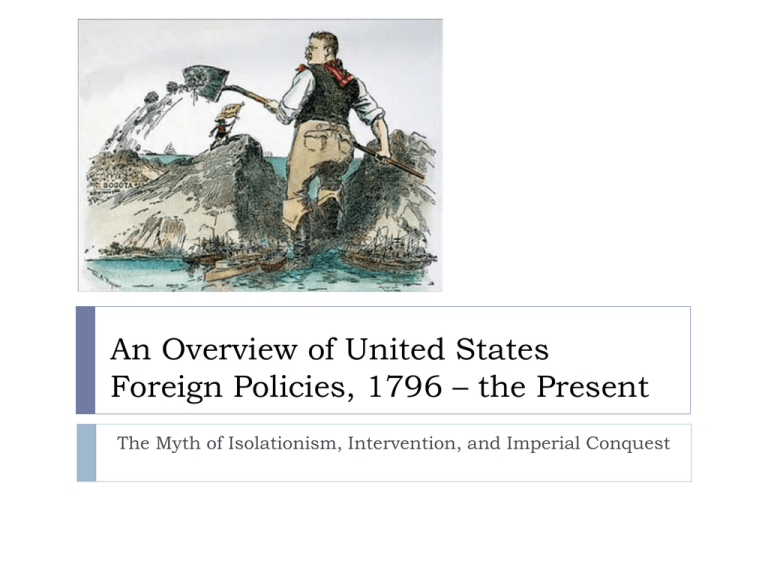
An Overview of United States Foreign Policies, 1796 – the Present The Myth of Isolationism, Intervention, and Imperial Conquest George Washington’s Farewell Address George Washington’s last speech to the people of the United States, in which he suggested that the United States should “steer clear of permanent alliances” and beware foreign entanglements. Isolationism – The Farewell Address Myth A foreign policy by which a nation avoids involvement with other nations affairs. In US History, we have never been completely isolationist. Occasionally, in an effort to stay out of conflicts, the United States has adopted isolationist foreign policies towards a certain region – for a certain amount of time. The Monroe Doctrine In this 1823 foreign policy pronouncement, the United States claimed the Western Hemisphere as its own “sphere of influence,” and warned European nations that North and South American – including the Caribbean – was no longer available for colonization. Secretary of State William Seward In 1867, this Secretary of State purchased Alaska – people called it a “Polar Bear Garden” or an “Icebox” – from Russia for $7.2 Million. Alfred Thayer Mahan He was the author of the book The Influence of Sea Power Upon History and an advocate for a strong US Navy. He also advocated the takeover of port cities worldwide to facilitate trade and to create naval bases. Queen Liliuokalani and the Annexation of Hawaii She was the last reigning monarch of Hawaii – overthrown by American planters and Marines in 1893, five years before President William McKinley annexed the islands. Spheres of Influence Areas in a nation, in the case of our studies China, where foreign nations had established economic and political control of the region. In the late 1800s and early 1900s, China was divided into several such regions, controlled by Russia, France, England, Japan, the United States, and Germany. Imperialism A foreign policy where larger stronger nations take over smaller weaker nations, or , “building empires by imposing political and economic control over people around the world.” Anti-Imperialists American like Jane Addams, Mark Twain, or President Grover Cleveland, who believed that the United States should not “take over” smaller nations or create an empire by taking colonies. This political cartoon suggests that before the United States attempts to bring “civilization” to the Philippines, we may need to work on the homefront… President Theodore Roosevelt He was the President most responsible for the taking of the Isthmus of Panama and the building of the Panama Canal. After offering a fair bid to Colombia, he used US Naval power to secure Panamanian Independence. The Roosevelt Corollary This policy was an addition to the Monroe Doctrine of 1823. It stated that the United States was entitled to be the leader of the Western Hemisphere and to act as a policeman in any disputes between Latin American, Caribbean, or South American nations. Theodore Roosevelt’s “Big Stick” Diplomacy TR’s willingness to use force when diplomacy failed, as typified in his favorite West African proverb: “Speak Softly, and carry a “Big Stick.” Dollar Diplomacy William Howard Taft’s foreign policy, based on the idea that establishing economic interests and relationships across the world was the best way to expand American influence abroad. The wave of prosperity! Woodrow Wilson’s Moral Diplomacy This President’s belief that the U.S. should attempt to teach nations to support and nurture democracy and individual rights was called “Moral Diplomacy.” He invaded Mexico twice! Intervention When a nation attempts to influence the foreign policy or conditions in another country without attempting to “take over” the country either economically or politically. World War I and Woodrow Wilson’s 14 Point Plan World War I was the United States “coming out party” so to speak, as we attempted to intervene decisively in a European dispute. While the military intervention worked, the foray into the world of diplomacy did not. World War II and the Fight to Defend Democratic Nations The so-called “Good War” was an American intervention to protect democratic institutions in Europe and end the Nazi tyranny. And, almost as an afterthought, we crushed the Japanese enemy which had attacked us. The Cold War Against Communism From 1945 – 1991, the United States engaged in an ideological war with the Soviet Union to stop the spread of communism. This battle, to a large extent, is being reinvented in the present standoffs with Russia. The War on Terrorism – A War Abroad and at Home American Intervention in Afghanistan, followed by the unrestricted pursuit of Al-Qaeda terrorists and other Islamic Fundamentalist radicals (like ISIS, Hezbollah, or Hamas) – has defined the past two decades.
